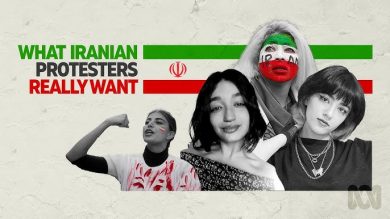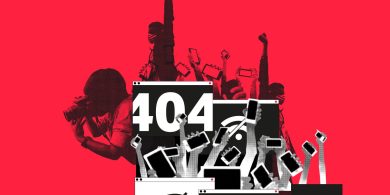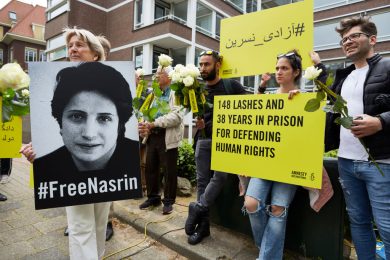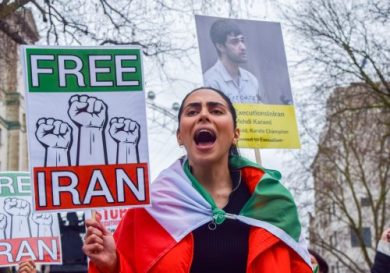For over four decades, the Islamic Revolutionary Guard Corps (IRGC) has been at the center of Iran’s regional ambitions, using covert alliances and proxy groups to extend its reach far beyond the country’s borders. While the world has long focused on Tehran’s nuclear program, it’s the IRGC’s network of proxies—stretching from Gaza to Yemen—that has become its most dangerous tool.
This is more than a security concern—it’s a moral and humanitarian crisis. As rockets rain on Israeli towns, militias destabilize Iraq, and children starve in Yemen, there is one thread tying these tragedies together: the IRGC’s playbook of proxy warfare.
1. The Logic of Proxy Warfare
At its core, the IRGC’s proxy strategy is a classic imperial tactic: project power abroad while maintaining plausible deniability at home. This approach allows Tehran to:
• Challenge regional rivals (like Israel and Saudi Arabia)
• Extend ideological influence
• Tie down U.S. and Western interests
• Mitigate direct retaliation for its actions
It’s cost-effective, deniable, and strategically brilliant—if you’re the IRGC. But for millions caught in the crossfire, it’s catastrophic.
2. The Quds Force: Architects of Chaos
Central to this strategy is the IRGC’s elite Quds Force, tasked specifically with “exporting the revolution” beyond Iran’s borders.
How It Works:
• Financial support: The Quds Force funnels hundreds of millions of dollars annually to its allies.
• Training and weapons: It builds underground factories, smuggling networks, and advanced drone programs.
• Political coaching: It helps allies gain political power, not just military muscle.
• Religious legitimacy: It wraps proxy violence in revolutionary Shia rhetoric, branding militias as defenders of Islam.
Under the leadership of figures like Qassem Soleimani, the Quds Force turned proxy warfare into an art form—one that still defines the region.
3. Lebanon: Hezbollah, Iran’s Crown Jewel
Hezbollah is perhaps the IRGC’s most successful export. Created in the 1980s during Israel’s invasion of Lebanon, Hezbollah began as a band of guerrilla fighters. Today, it is:
• A political party holding seats in Lebanon’s parliament
• A military powerhouse with more firepower than many states
• A welfare system providing social services to poor Shia communities
How the IRGC Benefits:
• Hezbollah acts as a deterrent against Israel.
• It expands Iran’s ideological footprint in the Levant.
• It’s a laboratory for testing drones, rockets, and cyberwarfare.
Hezbollah is the model the IRGC seeks to replicate across the region: an armed, loyal movement embedded within a fragile state.
4. Gaza: Hamas and Palestinian Islamic Jihad
The IRGC’s reach extends into Palestinian territories through Hamas and Palestinian Islamic Jihad (PIJ).
Despite theological differences (Hamas is Sunni, Iran is Shia), shared enmity toward Israel has forged a powerful alliance. The IRGC provides:
• Rockets and advanced munitions smuggled through tunnels
• Financial aid to sustain governance in besieged Gaza
• Training for Hamas and PIJ’s military wings
The result? A constant cycle of violence that strengthens Iran’s hand in any negotiation involving Israel.
5. Iraq: From Liberation to Occupation
After the 2003 U.S. invasion of Iraq, the IRGC moved fast to fill the power vacuum. It cultivated Shia militias, known collectively as the Popular Mobilization Forces (PMF).
Goals:
• Push out U.S. forces
• Prevent Sunni resurgence (especially ISIS)
• Dominate Iraq’s weak state institutions
Today, militias like Kataib Hezbollah and Asaib Ahl al-Haq are not just foot soldiers—they’re political kingmakers in Baghdad.
This dual power structure (state vs.
militia) ensures that no Iraqi government can fully break free from Iran’s orbit.
6. Yemen: The Houthis’ Deadly Alliance
The IRGC’s playbook found fertile ground in Yemen’s civil war. By backing the Houthi movement, Iran has:
• Threatened Saudi Arabia with drone and missile attacks
• Disrupted Red Sea shipping lanes
• Gained leverage in one of the world’s worst humanitarian crises
Though IRGC support to the Houthis is less direct than in Lebanon or Iraq, it’s enough to keep the flames of war burning—at a devastating cost to Yemen’s civilians.
7. The Common Threads: Tactics and Tools
Across all these proxies, the IRGC’s methods are strikingly similar.
Common Features:
• Cellular structure: Decentralized units loyal to Tehran, not local governments.
• Asymmetric warfare: Cheap drones, guerrilla tactics, and human shields.
• Ideological indoctrination: Revolutionary propaganda tying local grievances to Iran’s larger cause.
• Economic infiltration: Proxies run smuggling networks, charities, and “legitimate” businesses to fund operations.
This toolkit is more than a military strategy—it’s a formula for state capture and regional destabilization.
8. Humanitarian Consequences: Collateral Damage
While Tehran and its proxies claim to be defenders of the oppressed, the reality is stark.
• In Yemen, over 80% of the population relies on aid, with famine looming.
• In Iraq, militia violence has stifled democracy and driven youth into exile.
• In Lebanon, Hezbollah’s parallel state has left the country bankrupt and paralyzed.
• In Gaza, ordinary Palestinians are trapped in endless wars.
The IRGC’s proxies do not liberate—they enslave populations to perpetual conflict.
9. Why the IRGC Loves Proxies — And Why the World Must Respond
For the IRGC, proxies are the perfect blend of power and plausible deniability. But for the global community, ignoring them is no longer an option.
Here’s why:
• They globalize conflict: Hezbollah has cells in Europe and South America.
• They export ideology: Iranian-backed propaganda targets disaffected youth abroad.
• They undermine diplomacy: Peace efforts in Yemen, Syria, and Israel-Palestine are sabotaged by proxy spoilers.
• They commit war crimes: Attacks on civilians, child soldier recruitment, and ethnic cleansing are standard proxy tactics.
The IRGC’s proxies are not fringe players—they are central to regional (and global) instability.
10. The Moral Imperative: Voices from the Ground
The real story of proxy warfare isn’t in the halls of power—it’s in the lives it destroys.
• Lebanese families forced to choose between Hezbollah patronage and poverty.
• Yemeni parents burying children killed by Houthi-fired missiles.
• Iraqi students silenced by militias targeting dissenters.
• Iranian mothers whose sons died in Syria for a war they never chose.
Their voices are the strongest indictment of the IRGC’s playbook—and the clearest call for the world to act.
11. What Should Be Done?
a) Designate the IRGC and Its Proxies as Terrorists
Beyond the U.S., the EU, UK, and others must fully recognize these groups as terrorist entities.
b) Sanction Front Companies
The IRGC funds proxies through complex networks of businesses abroad. Track them. Freeze them.
c) Support Local Civil Society
Journalists, teachers, and activists in Lebanon, Iraq, and Yemen are already resisting these groups. They need protection and funding.
d) Strengthen Information Warfare
Expose the IRGC’s propaganda campaigns. Counter them with truth, not silence.
e) Build International Coalitions
Regional powers can’t tackle this alone. It’s time for a coordinated global effort.
Conclusion: Tehran to Gaza—and Beyond
The IRGC’s proxy playbook is a blueprint for endless war, wrapped in revolutionary slogans and religious justifications. It’s time to call it what it is: a machine of repression and destabilization that sacrifices lives for the ambitions of a few.
For decades, the world has treated these proxies as local nuisances—problems to be managed, not ended.
Join Our Newsletter!
Stay informed with the latest updates, news, and ways to take action in the fight for justice and global security. Sign up now to get updates delivered straight to your inbox!





